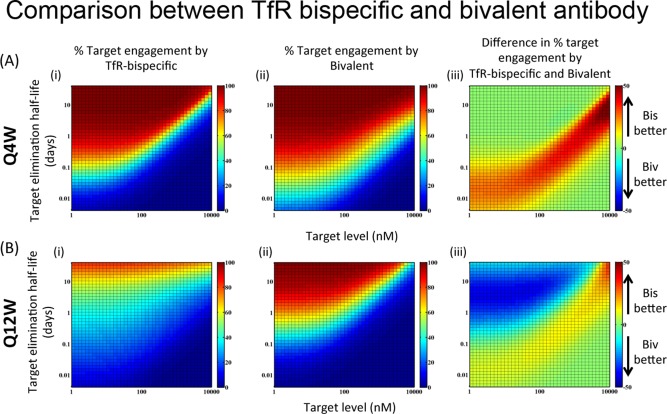Figure 4.

Target engagement by bivalent (anti‐Target KD = 1 nM, two binding sites) vs. bispecific (anti‐transferrin receptor [TfR] KD = 100 nM, anti‐Target KD = 1 nM) antibody for targets with varying expression levels and turnover rates. On the color bar, bispecific and bivalent are abbreviated as “Bis” and “Biv,” respectively. (a) If the antibody is given i.v. at 30 mg/kg every 4 weeks, then at intermediate target expression levels and turnover rates, bispecific antibody provides a significant advantage. (b) If the antibody is given i.v. at 30 mg/kg every 12 weeks, then the advantage of bispecific disappears while the bivalent antibody provides a significant advantage for slow turnover low expression level targets.
